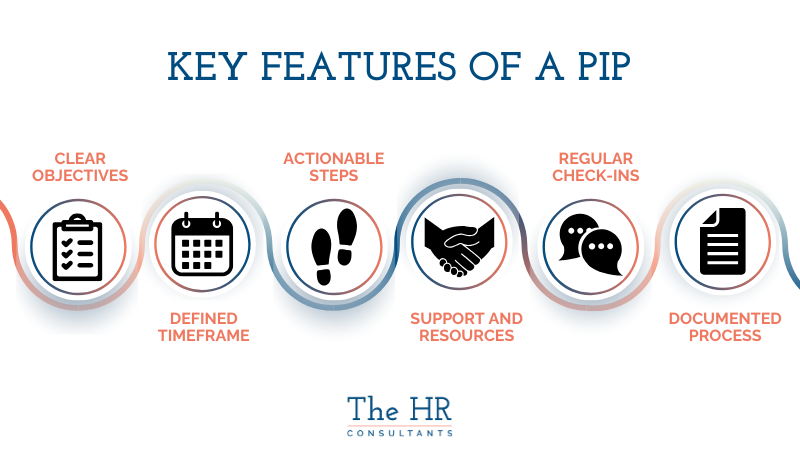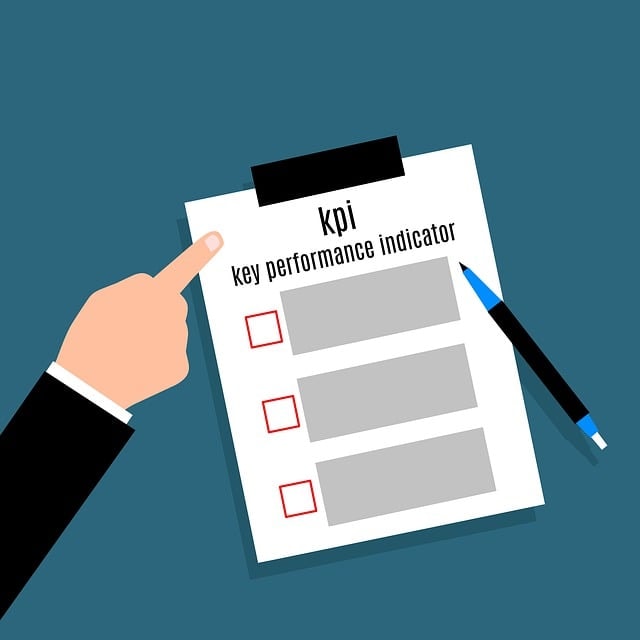"Managing employee performance can be challenging, especially for small to medium-sized businesses without a dedicated HR team. At The HR Consultants, we know that a Performance Improvement Plan (PIP) is a valuable tool designed to help struggling employees meet their potential while creating a positive workplace culture for the employee's manager and colleagues.
In this blog, we’ll explore what a PIP is, its benefits for your business, and best practices for implementation to amend poor performance.
Table of Contents
- What Is a Performance Improvement Plan (PIP)?
- Key Features of a PIP
- Benefits of a Performance Improvement Plan
- When Should a Performance Improvement Plan Be Implemented?
- How to Write an Effective Performance Improvement Plan
- Best Practices for Implementing a Performance Improvement Plan
- Examples of Performance Improvement Plans
- How to Respond to a Performance Improvement Plan (For Employees)
- Frequently Asked Questions
What Is a Performance Improvement Plan (PIP)?
Before we can give you some tips on how to implement PIP, let's make sure we have a clear understanding of exactly what it is.
Definition and Purpose of a PIP
A Performance Improvement Plan (PIP) is a structured tool used by employers to support employees in improving their performance to meet clearly defined expectations. It outlines specific goals, timelines, and resources, providing a collaborative framework for addressing challenges such as missed deadlines, poor attendance, or underperformance.
Remember: A PIP isn’t a punitive measure but rather a positive step towards aligning individual contributions with business objectives.
For an example of how to manage poor performance, look at the UK government's guidance for civil servants.
Key Features of a PIP
Now that we've defined a PIP, let's break down the key features included in each one.
- Clear Objectives: Outlines specific performance expectations and measurable goals to ensure clarity for both employer and an underperforming employee.
- Defined Timeframe: Sets a realistic timeline for achieving improvement, typically ranging from 30 to 90 days.
- Actionable Steps: Includes a step-by-step plan for addressing performance gaps, ensuring the process is manageable and focused.
- Support and Resources: Details the support available, such as training, mentoring, or additional tools to help the employee succeed.
- Regular Check-Ins: Schedules consistent feedback sessions to track your employee's progress, provide guidance, and address concerns.
- Documented Process: Ensures transparency and accountability, protecting both the employee and employer throughout the process.

Common Misconceptions About PIPs
Performance Improvement Plans (PIPs) often carry misconceptions that can cause unnecessary concern among employees and employers alike. Understanding the reality behind these misconceptions is key to using a PIP effectively.
“A PIP is just a step towards termination.” While it’s true that a PIP may follow serious performance concerns, its primary aim is to support improvement and help employees succeed in their roles. It’s designed as a tool for development, not punishment.
“PIPs only highlight failures.” A well-structured PIP focuses on actionable solutions and opportunities for growth. By setting clear goals and offering resources, it empowers employees to bridge performance gaps.
“PIPs are rigid and unchangeable.” On the contrary, PIPs should be flexible and tailored to the individual. Regular check-ins allow adjustments to ensure the plan remains fair and realistic.
Benefits of a Performance Improvement Plan
Implementing a Performance Improvement Plan (PIP) offers a range of benefits for businesses, going far beyond addressing individual performance issues. By creating a structured framework for improvement, a PIP can positively impact your organisation’s culture, employee morale, and operational efficiency.
Creating a Culture of Accountability
Imagine a scenario where James, a sales executive at a small tech company, is consistently missing his monthly targets. Instead of immediately resorting to disciplinary action, his manager introduces a Performance Improvement Plan.
Together, they outline specific, measurable goals, such as increasing his client calls by 20% over the next month. Weekly check-ins are scheduled to track his progress and provide guidance. This structured approach holds James accountable and gives him a clear path to improvement.
Enhancing Employee Performance and Morale
Contrary to misconceptions, a PIP isn’t about punishment—it’s about development. When employees see their employer investing in their growth through tailored plans and support, it boosts morale and motivation. In fact, companies with structured feedback processes see a lower turnover rate.
Saving Time and Money on Recruitment and Training
Replacing an employee can cost around £25,000, including recruitment and onboarding expenses. By helping existing employees improve, a PIP saves businesses money while retaining valuable skills and knowledge within the team.
Reducing Legal and Compliance Risks
Documenting performance issues and the support provided helps businesses maintain compliance and mitigate risks. Should disputes arise, a clear PIP process demonstrates fairness and transparency.
Strengthening Team Dynamics and Company Culture
A proactive approach to performance management creates a culture of trust and collaboration. Teams function better when individuals are supported and aligned with shared goals, enhancing overall workplace satisfaction.
When Should a Performance Improvement Plan Be Implemented?
Identifying the right moment to implement an employee Performance Improvement Plan (PIP) is critical for its success. If done too early, it might be seen as excessive. Too late, and it might feel like a mere formality before termination. So how do you find the right balance?
Identifying Warning Signs of Underperformance
Start by looking for consistent patterns of underperformance. For example, is an employee regularly missing deadlines, delivering subpar work, or failing to meet their KPIs? Maybe their interactions with colleagues or customers lack professionalism. When these issues are recurring despite informal feedback, it’s time to consider formalising the process with a PIP.
Situations Where a PIP May Not Be Appropriate
However, not every situation calls for a PIP. If the problem stems from external personal circumstances or is a one-off mistake, alternative support like mentoring or temporary adjustments might be more suitable. Using a PIP unnecessarily could erode trust and morale, so it’s important to assess each situation carefully.
The Role of Regular Performance Reviews
Regular performance reviews can act as an early warning system. They help identify potential issues before they escalate, providing an opportunity for informal feedback and support. When these measures aren’t enough to resolve the issue, a PIP becomes the next logical step.
How to Write an Effective Performance Improvement Plan
A successful PIP requires more than just a list of tasks and deadlines. It’s about creating a tailored plan that sets the employee up for success. Here’s a step-by-step guide:
Step 1: Evaluate the Situation
Before drafting the PIP, take time to fully understand the problem. Gather feedback from managers, HR, and colleagues. Identify patterns and assess whether external factors, like workload or resources, are contributing to the issue.
Step 2: Create Measurable Objectives
Ambiguity leads to frustration. If an employee is falling short on sales, specify an improvement target, such as securing five new clients within 30 days. Clear objectives leave no room for misunderstandings.
Step 3: Outline Resources and Support Available
What tools, training, or mentorship can you offer to help the employee succeed? For instance, provide access to sales workshops or one-on-one coaching with a high-performing team member.
Step 4: Develop a Schedule for Check-Ins and Updates
Regular progress reviews are essential. These check-ins allow managers to track improvements, address concerns, and make adjustments to the PIP if necessary.
Step 5: State the Consequences of Non-Improvement
While a PIP is about support, it’s also important to be transparent about what happens if the goals aren’t met. Clearly outline the potential outcomes, whether it’s reassignment, further review, or, in some cases, termination.
Step 6: Gain Managerial and HR Approval
A well-constructed PIP should be reviewed and approved by both HR and management to ensure it aligns with company policies and is fair to the employee.
Best Practices for Implementing a Performance Improvement Plan
To maximise the effectiveness of a PIP, follow these best practices:
- Communicate Transparently and Positively: Frame the PIP as an opportunity for growth rather than a punishment. Be clear about its purpose and benefits.
- Focus on Collaboration, Not Punishment: Involve the employee in setting goals and creating the plan. This collaborative approach fosters buy-in and motivation.
- Regularly Monitor Progress and Provide Feedback: Frequent updates keep the process on track and demonstrate your commitment to the employee’s success.
- Encourage Employee Participation in Goal Setting: Employees are more likely to be motivated if they have a say in setting their targets.
- Tailor the PIP to Individual Needs and Circumstances: One size doesn’t fit all. Adapt the plan to suit the employee’s unique situation.
Examples of Performance Improvement Plans
To bring these concepts to life, here are some scenarios illustrating how PIPs can be applied:
Example 1: Improving Attendance and Punctuality
An employee who frequently arrives late is placed on a PIP requiring them to maintain 100% punctuality over the next 30 days. Support includes flexible start times and access to resources on time management.
Example 2: Addressing Missed Deadlines
A project manager struggling with deadlines agrees to deliver all projects on time over a three-month period, supported by workflow optimisation tools and weekly progress meetings.
Example 3: Enhancing Customer Service Skills
A customer service representative with poor feedback is tasked with achieving an 80% satisfaction rate within 60 days, aided by a mentor and training sessions on active listening.
Example 4: Boosting Productivity and Efficiency
An employee who isn’t meeting productivity benchmarks is given a clear target for output, with access to time management training and software to streamline their tasks.
Example 5: Correcting Unprofessional Behaviour
An employee displaying unprofessional behaviour is asked to demonstrate improvement in interpersonal skills through participation in workshops and regular feedback sessions with their manager.
Performance Improvement Plans: Template
You may require a personal improvement plan for the following reasons.
- Improving Attendance and Punctuality
- Addressing Missed Deadlines
- Enhancing Customer Service Skills
- Boosting Productivity and Efficiency
- Correcting Unprofessional Behaviour
We've compiled a template that you could modify for use in your workplace:
Performance Improvement Plan (PIP)
Employee Name: [Insert Name]
Job Title: [Insert Title]
Department: [Insert Department]
Manager/Supervisor: [Insert Name]
Date Initiated: [Insert Date]
PIP Duration: [Insert Timeframe (e.g., 30/60/90 days)]
1. Performance Areas of Concern
Issue(s) Identified:
[Describe the specific performance issues. Be clear and concise. For example: “Missed deadlines for project submissions” or “Customer feedback indicating dissatisfaction with service quality.”]
Impact of Issue(s):
[Outline how the performance gap affects the team, department, or organisation. For example: “Delays in project completion affect client satisfaction and overall team productivity.”]
2. Performance Goals and Expectations
Specific Objectives:
[List clear, measurable objectives the employee needs to achieve. For example: “Submit all projects within the agreed deadlines for the next 60 days.”]
Expected Standards:
[Define what constitutes acceptable performance for each objective. For example: “Complete client calls within 24 hours of assignment with an 80% satisfaction rating.”]
3. Support and Resources
Provided Resources:
[List the tools, training, or support the organisation will provide. For example: “Access to a time management workshop and one-on-one mentoring sessions with a team leader.”]
Manager Support:
[Outline how the manager or supervisor will assist the employee. For example: “Weekly check-ins to review progress and address challenges.”]
4. Timeline and Checkpoints
Start Date: [Insert Date]
End Date: [Insert Date]
Check-In Schedule:
[List specific dates for progress reviews. For example: “Week 1: Initial review, Week 3: Midpoint progress check, Week 6: Final review.”]
5. Consequences of Non-Improvement
[Clearly state the outcomes if the employee does not meet the objectives within the PIP timeframe. For example: “If improvement is not demonstrated, further action will be taken, which may include reassignment or termination.”]
6. Acknowledgement and Commitment
Employee Statement:
“I acknowledge that I have reviewed and understand this Performance Improvement Plan. I am committed to working towards the outlined objectives and will actively participate in the improvement process.”
Employee Signature: _______________________ Date: _______________
Manager/Supervisor Signature: _______________________ Date: _______________
7. Final Review
[To be completed at the end of the PIP period.]
Outcome:
[Summarise whether the objectives were met and next steps. For example: “Employee has successfully met the objectives and will return to standard performance reviews.” Or: “Objectives were not met, and further action is required.”]
Manager/Supervisor Signature: _______________________ Date: _______________
Employee Signature: _______________________ Date: _______________

How to Respond to a Performance Improvement Plan (For Employees)
Being placed on a Performance Improvement Plan (PIP) can feel overwhelming, but it’s important to remember that a PIP is a tool designed to support your growth and success. By approaching it with the right mindset and strategies, you can turn this into an opportunity to showcase your resilience and commitment to improvement. Here’s how to navigate a PIP effectively:
Be Proactive
A PIP is not just about meeting outlined targets—it’s about demonstrating initiative. Look beyond the minimum requirements of the plan. If your PIP focuses on increasing productivity, explore tools or strategies that could help streamline your tasks and share these with your manager.
Tracking your progress is equally important. Maintain a record of your achievements during the PIP period. This not only gives you a sense of accomplishment but also provides concrete evidence to show your employer during review meetings.
Stay Positive
Maintaining a positive outlook is crucial when navigating a PIP. While it’s natural to feel anxious about being placed on one, shifting your perspective can make all the difference. Instead of viewing the PIP as a critique, see it as a structured opportunity to improve and excel.
Focus on the end goal—whether it’s achieving your KPIs, enhancing your skills, or repairing workplace relationships. Celebrate small wins along the way, and use them as motivation to keep moving forward. Your attitude can leave a lasting impression on your employer, showing that you’re adaptable and determined.
Engage in Open Communication
Effective communication is at the heart of a successful PIP experience. Keep your manager informed about your progress and any challenges you face. Should a particular goal prove more difficult than expected, discuss potential adjustments. This shows that you’re not only committed to improvement but also capable of seeking solutions collaboratively.
Use feedback constructively. Whether it’s praise or constructive criticism, view it as valuable input that can help you refine your approach. Responding to feedback with a growth mindset further demonstrates your commitment to self-development.
Plan Beyond the PIP
While your immediate focus should be on meeting the goals of the PIP, it’s also a chance to think about your broader career trajectory. Reflect on what led to the need for a PIP and how you can prevent similar situations in the future. Set personal development goals that extend beyond the PIP, and discuss them with your manager during review meetings.
For example, if the PIP highlighted a need for better time management, you might commit to using project management tools long-term or exploring additional training opportunities. This proactive approach shows that you’re not just focused on short-term improvement but are invested in sustained professional growth.
Seeking Guidance and Resources for Improvement
Seek guidance from your manager or HR team, or contact HR experts. Ask for clarification if any part of the PIP is unclear. Our HR Documentation consultation will allow you to have a complete Performance Improvement Plan that covers everything you need it too.
[addCTA blink=""/services/hr-documentation/"" title=""Regularly check in to ensure you’re on the right track""]
Showing that you’re proactive about improvement demonstrates a positive attitude and a willingness to engage with the process.

Frequently Asked Questions
We've answered some frequently asked questions about creating a PIP.
What happens if an employee fails a PIP?
If an employee fails a Performance Improvement Plan (PIP), the employer may consider further steps, such as reassignment, extended review, or termination. The decision will depend on the company’s policies and the specific circumstances.
Can a PIP lead to termination?
Yes, a PIP can lead to termination, but only after a fair and transparent process. Employers must ensure the PIP was implemented correctly, providing the necessary support and opportunities for improvement.
How long does a PIP last?
A typical Performance Improvement Plan lasts 30 to 90 days, giving employees sufficient time to address and improve specific areas of underperformance. The duration can vary based on the goals outlined.
What makes a PIP successful?
A successful PIP results in measurable improvement in employee performance, renewed confidence, and better alignment with organisational goals. It should also enhance team morale and overall productivity.
Can an employee challenge a PIP?
Yes, employees can raise concerns if they feel a PIP is unfair. Open communication with HR or management ensures the plan is realistic, achievable, and aligned with company policies."












